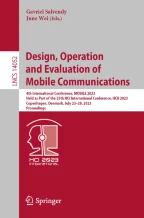
This article intends to sort out and analyze the model types and current status of human-computer interaction in mobile applications and explore and discuss the communication methods of human-computer interaction in mobile applications. Today’s mobile applications, accompanied by the anthropomorphic and immersive design of the system, have built a bridge of communication and interaction between the sender and the receiver, making it possible for users to build social relationships in the virtual field, bringing users and the media closer. At the same time, it also provides the possibility to shorten the distance between users, users and communities in the virtual field. For users, mobile applications are no longer machines or tools. Driven by the human-computer interaction mode, mobile applications have become personal and emotional “partners”, participating in various life scenes and emotional connection activities of users. The human-computer interaction mode of mobile applications based on emotional communication has comprehensively improved the user’s sense of immersion, participation, and experience, and also puts forward higher requirements for the design of future mobile application products. New technologies generate and realize new interaction modes, and new technologies better enhance the user experience of mobile application human-computer interaction. New technologies also provide more possibilities for the down-spreading of mobile application human-computer interaction modes. At the same time, the communication effect in the human-computer interaction mode of mobile applications has been improved.
This is a preview of subscription content, log in via an institution to check access.